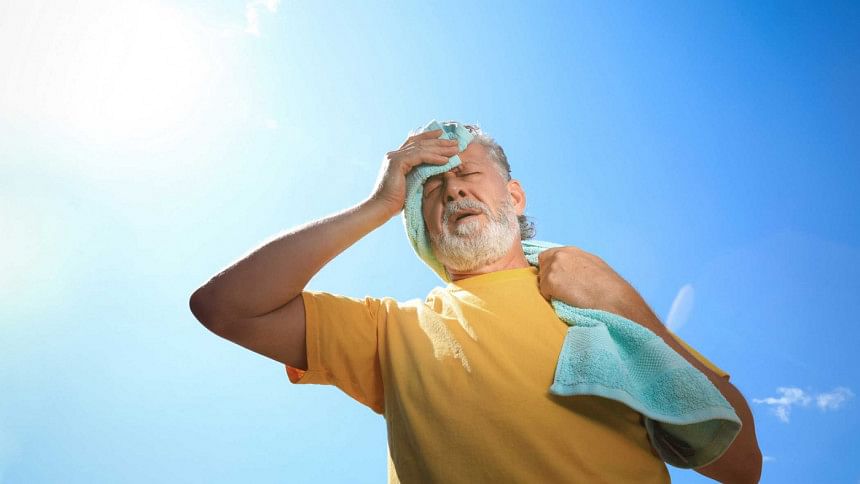Managing extreme heat: Understanding risks and protective measures

Globally, the environment is changing very rapidly, and one of its effects is the change in atmospheric temperature. In the last few decades, we did not face such hot and humid weather. Nowadays, temperatures surge up to 41–42°C, and due to high humidity, it feels like 44–45°C, which makes our lives miserable, especially for the elderly and children.
In health, the body core temperature is maintained at 37°C by the hypothalamic regulatory center. Heat is produced by cellular metabolism and lost through the skin by both vasodilatation and sweating, as well as through the lungs in expired air. Profuse sweating occurs when the ambient temperature is greater than 32.5°C and during exercise. The evaporation of sweat is a vital mechanism for cooling the body. If we stay for a long time in this weather, the following things happen:
Heat acclimatisation: Acclimatisation to hot climates takes several weeks. Sweat volume increases, and its salt content falls. Increased evaporation cools down the body.
Heat cramps: Painful muscle (usually leg) cramps often occur in well-acclimatised, fit young people when they exercise in hot weather. Cramps are due to low extracellular sodium caused by the replenishment of water but not salt during prolonged sweating. They can be prevented by increasing dietary salt and responding to combined salt and water replacement.
Heat illness (Heat exhaustion): In high environmental temperatures, particularly with high humidity, vigorous exercise in clothing that inhibits heat loss can provoke a sudden elevation in core temperature. Weakness, exhaustion, dizziness, and syncope, with a core temperature >37°C, define heat illness. Temperature elevation is more important than water and sodium loss. Heat illness may progress to heat injury. Management involves removing oneself from the heat source, cooling with cold sponging and fans, and giving oxygen by mask if possible. Oral rehydration with salt and water (ORS) is given in the first 24 hours. In severe heat illness, IV fluids are needed, and isotonic saline is given depending on serum sodium. Careful monitoring is required. Secondary potassium loss must be corrected.
Heat injury (Heat stroke): Heat injury is an acute, life-threatening situation when the core temperature is >41°C. There is a headache, nausea, vomiting, and weakness. When the skin is hot, sweating is often absent but not invariable, even in severe heat injuries. Brain involvement leads to confusion, delirium, and coma. Heat injury develops in hot, humid, windless climates, even without exercise in appropriate clothing. Old age, diabetes, and certain drugs (alcohol, anticholinergics, diuretics, and phenothiazines) are precipitating factors. The pathogenesis of heat injury includes a fall in cardiac output, lactic acidosis, and intravascular coagulation. Management involves removing oneself from the hot area immediately, cooling with sponging and ice packs, and giving fluids with caution, as hypovolemia is often absent. Prompt treatment is essential and leads to rapid and complete recovery; delay may be fatal. Prevention involves acclimatisation, fluid intake, and common sense.
These problems can be fatal and have grave consequences. Although we cannot change the weather or temperature, we can protect ourselves with the following measures:
- Avoid direct sun exposure; use umbrellas or caps when going out.
- Drink plenty of water, and always carry a water bottle.
- Restrict school children's outdoor activities; ensure well-ventilated classrooms with adequate fans or AC if possible.Teachers should ensure children drink frequently.
- Advise the elderly to stay hydrated and indoors.
- Arrange small water tanks in residential areas for street walkers and rickshaw pullers.
- Encourage affluent individuals to distribute bottled water to passersby in their communities.
- Ensure hospitals and clinics are trained to handle heat stroke cases effectively.
The writer is the Professor and Head of the Department of Medicine at ZH Sikder Women's Medical College & Hospital.
Email: [email protected]

 For all latest news, follow The Daily Star's Google News channel.
For all latest news, follow The Daily Star's Google News channel. 








Comments